We would like to share with you a poem prepared and recited by Dr Richard Stiles for our Exhibition Pargoda.
WALK THE LAND
Thank you for the offer, Richard is the name, I’m here on behalf of the LEG, The Lithgow Environment Group, you see, The mouse that roars!, Or so we hope, To speak a bit, Hopefully not get lost in preaching
Or thinking I should be teaching
Thanks to Sharon & Ramsey, And the Gang Gang team, We’re here today to look towards a dream, Of finding that place between our present & past, Respecting our land
And make this place last
Walk the land, Feel its call, What is it saying, And how do we respond
See the land gave us coal, And muscle brought it up, Forged a town of mates, with their head-lit helmets, Who looked out for each other, When things got sketchy, Which they did at times down in the dark
When you’re way underground, Gotta keep your eyes moving around
And that was all good hard stuff you see, The town chugging on, Through the smoke & the dust & the donkey boilers, Claimed the grit as its own, Like a tattoo in your bones
Walk the land, Hear its call, What is it saying, And how do we respond
But things move along, The glory days of coal is old, The game has changed, Well & truly time to move on
Longwalls crack the earth, Drain the water from the swamps, And a swamp is a swamp is not just a swamp, It’s a sponge holding water, The stuff that flows life, Slowly gives to the land
Feeds the streams & the plants, The birds & the bees, Kill the swamps, Kill the land, Kill our hearts in between
Walk the land, Feel its call, What is it saying, And how do we respond.
It all starts with the rocks, Pagodas & canyons, Hanging valleys and ridges, Basalt caps and rock bridges, Then the life comes in, In the valleys, on the ground, The rocks & the life, Well, they all mix around
Our indigenous friends, Feel rocks have spirit, And if there was ever a place, It’s here that I feel it, From the sharp and brittle, To the carved and supple, The dry mountaintops, To the dark dripping dells
The rocks are our base, And we break them at our peril, Walk the land, See its call, What is it saying, And how do we respond
So thanks to the artists, Who sense this & feel, And with their hands & their hearts, Shape & create, To find a path, To see into this land, To answer its call
And respond…. for us all
Yindya-ma-rra
Let’s move slowly & gently & with careful respect, Respect the land, as it nurtures us, Respect each other, as far as we can, Including for those who can’t yet see a path, Beyond the coal that has protected them in the past
Some worry that no coal means no food, Fair enough, Some see no reason to look out for the land, As we might for a brother, Or who don’t care when they’re gone, What’s left for another
Hard to see eye to eye, heart to heart, with all, But yet we do hope that with time, More & more can come to see the need to feed the reeds, The birds & bees, And see we’re all just part of one big song
Walk the land, Hear its call, What is it saying, And how do we respond
Imagine a place, Where this town shines bright, Where our children run healthy, And the beauty of the land, Is what makes us feel wealthy, The air is clean, And we can each earn a crust
Without doing stuff that makes the place bust, Traditions run deep, But when they no longer serve us, It’s time to move on, And not cling to what’s gone, Imagine a place, Where the rocks hold their form
The rivers run free, And life thrives along, Walk the land, Feel its call, What is it saying, And how do we respond.
Exhibition Pagoda at the Gang Gang gallery in Lithgow provides a focus on the Western Blue Mountain’s iconic Pagoda Country – the ‘Pagoda Journey Forum’ is being held at the Gallery as part of this exhibition.
The forum will provide an opportunity to hear of the treasures tucked away in the country earmarked for protection under the Destination Pagodas proposal1. It will provide insight into the unique landscape, the amazing range of flora within it, the efforts that have been made to protect it to date and the potential for the regional economy that the Destination Pagodas proposal provides.
As a highlight in the forum you will hear a conversation between a curator and two acclaimed artists relating to the inspiration they derive from landscape, an insight into the visceral response we all feel when connecting to wild beauty.
The Destination Pagodas’ State Conservation Zone proposal will effectively create a park under which legacy mining activity will continue. At the same time new age energy initiatives are appearing in the region whilst traditional power generators continue their operation, all part of a transition. We are going to close the forum with a reflection on this transition, a presentation on renewable energy and what is happening locally – The Lithgow Community Power Project.

DESTINATION PAGODA WEBSITE

A new State Conservation Area offers communities of Lithgow and the Greater West a golden opportunity for the future and endless possibilities for visitors to experience one of Australia’s unique national treasures. Join us at https://www.destinationpagoda.com.au
Facebook Page
https://www.facebook.com/Destination-Pagoda-102928388608462
Instagram Page
https://www.instagram.com/destinationpagodansw/
Twitter Page
https://twitter.com/DestinationPag1
Australia’s Gardens of Stone
by Filmmaker Joel Robinson
Discover the Gardens of Stone west of Blue Mountains National Park, a place of extraordinary natural beauty, wildlife and ancient Aboriginal art. An iconic Australian landscape now is the time to protect it for future generations.
Visit http://gardensofstone.org.au

P A G O D A J O U R N E Y F O R U M
Exhibition Pagoda at the Gang Gang gallery in Lithgow provides a focus on the Western Blue Mountain’s iconic Pagoda Country – the ‘Pagoda Journey Forum’ is being held at the Gallery as part of this exhibition.
The forum will provide an opportunity to hear of the treasures tucked away in the country earmarked for protection under the Destination Pagodas proposal1. It will provide insight into the unique landscape, the amazing range of flora within it, the efforts that have been made to protect it to date, and the potential for the regional economy that the Destination Pagodas proposal provides.
As a highlight in the forum, you will hear a conversation between a curator and two acclaimed artists relating to the inspiration they derive from the landscape, an insight into the visceral response we all feel when connecting to wild beauty.
The Destination Pagodas’ State Conservation Zone proposal will effectively create a park under which legacy mining activity will continue. At the same time, new age energy initiatives are appearing in the region whilst traditional power generators continue their operation, all part of a transition. We are going to close the forum with a reflection on this transition, a presentation on renewable energy, and what is happening locally – The Lithgow Community Power Project.
FORUM PROGRAMME
Reflections on Wildness
Some thoughts on wilderness and wildness as contributors to human well being
Dr. Paul Brown
Reflections on the Past
A summation of where we have been and where we are going
Dr. Richard Stiles
Reflections on Country
A conversation between artists on their spiritual response to landscape
Anne Graham, Cindy Yuen-Zhe Chen and Nic Tsoutas
Science, Ethics, and Wonder
celebrating The Gardens of Stone and the long campaign to protect them
Dr. Haydn Washington
Reflections on the Journey
The journey | Milo Dunphy Colo Committee Haydn Washington
Madi McLean
Reflections on a Future
The Lithgow Community Power Project
Greg Mortimer OAM
We will commence with morning tea at 10.30 with formal proceedings at 11 am. Light lunch will be served for which we ask attendees to make a donation of $15. Bookings essential go to
FORUM PRESENTER’S BIOGRAPHIES

Anne Graham
Anne Graham is an artist and an academic; she has exhibited in the Adelaide, Brisbane and Melbourne Festivals, the Biennale of Sydney, Perspecta and in many curated exhibitions nationally and internationally. In 2000 Anne Graham completed ‘Passage’ a major permanent public art work for the City of Sydney. She has created major public artworks for the Tweed River Regional Gallery, Newcastle City Council The Australian National University and Art Front Gallery in Japan. She has worked extensively in Japan exhibiting in three Echigo Tsumari Triennials and producing public artworks in Tachikawa, Iwadeyama and Tokamachi. In 2010 and 2011 she completed residencies at the Redgate Studios in Beiijing and exhibited at the 798 Art Precinct. She also completed a residency at Australia House, Echigo Tsumari, Japan in collaboration with TAMA Art University and the Australian Embassy in Tokyo. She returned to Japan in July 2012 to complete a short residency and exhibition in Niigata, in November 2012 she exhibited in Hong Kong and received the Woolmark Award for Creativity. In June 2014 she completed a residency at the Kulturcentrum, Konsthallen,
Sandviken, Sweden that culminated in a Solo exhibition. She has recently undertaken a residency for The Katoomba Cultural Centre that will culminate in an exhibition in June 2015. Later in 2015 she will take up a three month residency for The Power Institute of Fine Art, Sydney University, at The Cite in Paris. PhD Royal Melbourne Institute of Technology, 2007 Master of Art, Royal College of Art, 1973.
Graduate Diploma of Education, West Australian Institute of Technology, 1983. Diploma Art and Design, Manchester College of Art. 1969

Paul Brown
Paul is a community artist, playwright, and creative producer, also an educationalist, facilitator, author, and researcher. Environmental issues, the link between science and arts, communications and community engagement are central to his projects. Originally trained as a geologist, then also qualifying in history and philosophy of science, Paul has experience in fields of earth sciences, environmental humanities, eco-criticism, creative arts practice and science and technology studies. As a creative writer and producer, mostly of plays and films, Paul is the author of Aftershocks, verbatim theatre about the Newcastle earthquake. He co-founded Urban Theatre Projects in 1980, and wrote major community theatre works for Murray River Performing Group, Theatreworks, and Urban Theatre Projects. He is author of the documentary film Sixty Thousand Barrels, and of the verbatim play Half a Life. In 2014-18 he was the Creative Producer for the Australia Council funded Nuclear Futures creative partnerships initiative, linking artists with atomic survivor communities to make creative works across 22 multi-arts projects. His recent work includes an oral history and performance project ‘Crowded World’ and he is currently developing a new arts project ‘Recovery’ with the Blue Mountains World Heritage Institute. This Eco-arts project links creative artists with the community of citizen scientists who monitor fire recovery and climate change impacts in the Blue Mountains. Across one year using community arts processes, we will record and develop citizen science narratives, participate in workshops and creative development, and collaborate on presentations of curated image-sound-story, via multiartform live events and web-based digital arts. The project builds on 15 years of community engagement by the Blue Mountains World Heritage Institute and its collaborating organisations, including environmental arts projects. In this new initiative, scientists and artists together will coproduce new ecological knowledge – aiming to transform understanding of the relationship between humans and the rest of nature, while informing environmental decision-making by communities and agencies

Yuri Bolotin
Yuri Bolotin is a wilderness explorer, author, and environmentalist with over 30 years of experience in the Australian Bush. He regularly leads and takes part in wilderness research expeditions and is a member of the Colong Foundation for Wilderness and the Blue Mountains Conservation Society.
Together with his wife Rae, Yuri also runs BigCi (Bilpin international ground for Creative initiatives), an artist residency program on the edge of Wollemi National Park.
Together with his colleagues and co-authors Michael Keats and Brian Fox (the trio is known as the
Bushexplorers), he has recently published the fourth of the series of books about the Wollemi National Park and is also contributing to the publication of a 9-book series on the Gardens of Stone region. Yuri has received the Excellence in Conservation Occasional Award 2018 from the National Parks Association. See also www.bushexplorers.com.au and www.bigci.org

Dr Megan Halcroft
I started my degree in Horticultural Science in 1998 at the University of Western Sydney (UWS), when my daughter Elen was in preschool, graduating in 2004. With a degree in horticulture, I worked in garden maintenance for 12 months, a job I decided was for the birds (or at least for someone much younger). I discovered bees, both honeybee and native, while doing the Apiculture unit in the horticulture degree. When I began my Bachelor of Science (Honours) degree, in 2006, I was lucky enough to be given a project which involved the Australian stingless bee Austroplebeia australis. I’ve become intrigued by these little creatures and am very fond of them.
I began my PhD candidature at UWS in 2008, studying A. australis and their potential as an alternative (to the honey bee) crop pollinator. I’ve also been looking at their foraging behaviour and energy expenditure, compared to other Australian stingless bee species. I have been able to gain a better understanding of their life cycle and life span. Under the guidance of and in collaboration with Dr Anne Dollin, of Aussie Bee, we have been working to try and solve some of the taxonomic puzzles posed by the bee species within the genus Austroplebeia. One of my greatest pleasures has been meeting and speaking with some of the dozens of stingless bee enthusiasts and experts in Queensland and northern NSW. It’s such a pleasure to spend time with people who are so passionate about our native bees.
I submitted my dissertation, “Investigations into the Biology, Behaviour and Phylogeny of a Potential Crop Pollinator: the Australian Stingless Bee, Austroplebeia australis”, and graduated with a Doctorate of Philosophy in April 2013.
During my many and varied studies I’ve become more appreciative of the importance of diversity within our lives and our environment. It’s been a privilege getting to know our native stingless bees, up close and personal, and I really have come to love them. I now want to share my passion for bees, of all kinds, with other people and increase community awareness of their importance in our lives. Hopefully we can all learn together and, in so doing, help in their conservation.

Michael Keats OAM
When Michael was growing up at Balmoral during the Second World War, the beaches and headlands provided a diversity of experiences – walking, climbing, swimming – as well as opportunities to observe and question the natural world and to engage in embryonic exploration. At age six, he became the youngest member of the Royal Zoological Society of NSW.
At 60, Michael made exploratory bushwalking his occupation, with abseiling, multi-day pack walking and canyoning adding to the experiences he enjoys. A compulsive chronicler, he documents each walk experience systematically, compiling relevant maps and annotating photographs. When Michael is not in the bush, his time is split between desk and library research. Fifteen years ago, he teamed up with two other remarkable explorers, Brian Fox, and Yuri Bolotin. They became known as the Bushexplorers and established a website that promotes their activities and publications and acts as a free reference to the bushwalking community.
In 2011, Michael was made a Life Member of the Bush Club Inc., “In recognition of Long and Loyal Service to the Club as a Leader of Walks and an Adventurous Member during many years of continuous membership.” Further recognition of his bushwalking career came on Australia Day 2016, when he was invested with an OAM, “For service to bushwalking, and as an author.”
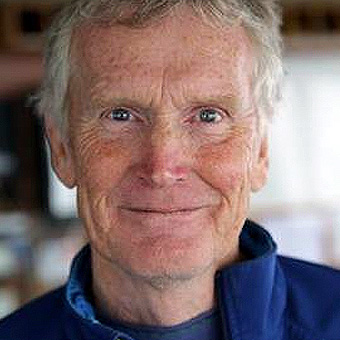
Greg Mortimer OAM
Greg is a farmer in Hartley Vale, a passionate supporter of community initiatives and a keen proponent of new age energy initiatives. He is a founding director of the Lithgow Community Power Project.
By profession, Greg is a geologist and is also one of the world’s foremost mountaineers. As a geologist, he has been involved in mineral exploration, as well as geological mapping throughout Australia and Antarctica.
From 1979 to 1984, Greg worked as a geologist, a survival training instructor, and a Scientific Affairs Adviser for the New Zealand Antarctic Division. He has been involved in Antarctic science, tourism and private expeditions since then and is a former chairman of IAATO.
His many achievements in mountaineering include the first ever ascent of the South face of Annapurna Two in 1983; the first Australian ascent of the North face of Mount Everest, without the use of supplementary oxygen, in 1984; the first Australian ascent of Vinson Massif, the highest mountain in Antarctica, in 1988; in 1990 the first Australian ascent of K2, the second-highest mountain in the world: in 1994 the first ascent of Mt Chongtar which was the highest unclimbed mountain in the world: and in 2002 an ascent of Mt Manaslu, the eighth highest mountain in the world.
In 1988 Greg organized and led the Australian Bicentennial Antarctic Expedition. These journeys have been covered in two documentaries, which have been distributed worldwide – “The Loneliest Mountain”, by Film Australia and “Everest – The Australian Assault”, by the Australian Television Channel Nine Network.
In 1992 Greg co-founded Aurora Expeditions with his wife Margaret. The company operated ice-strengthened ships in the Antarctic and Arctic as well as more conventional ships on Australia’s Kimberley Coast and in the Galapagos. He is dedicated to introducing small groups of like-minded travelers to these remote places. He has visited Antarctica more than 70 times now. In 2001 and 2002 he led small expeditions which repeated Sir Ernest Shackleton’s famous crossing of the island of South Georgia.
He sold Aurora Expeditions in 2008.
Greg’s accomplishments have been recognized by the Australian government with the Order of Australia Medal for mountaineering. He is also the recipient of three Australian Geographic Society medals. He is a trustee of the Australian Geographic Society and was a vice president of the Youth Hostel Association.
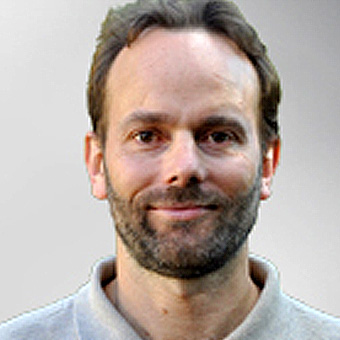
Dr. Richard Stiles
Richard Stiles has been involved in the Lithgow region for the last 20 years – both as a medical practitioner and environmental advocate. He has an interest in moral philosophy and human sustainability / future life options.
He has found the natural environment in the Lithgow hinterlands to be as rich a playground as any, from many, many years of wilderness explorations around the world. It truly is a natural paradise and under-recognized by many in this city.
It is a region that has many potentialities, and Richard shares the enthusiasm of his other community and environmental colleagues, to see Lithgow reach its full potential – as it moves past the mining phase of its history
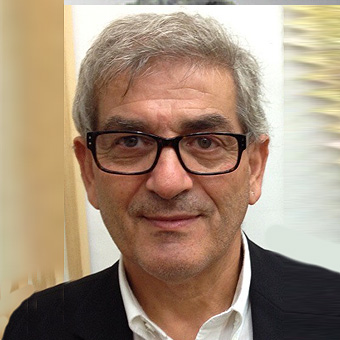
Nicholas Tsoutas
Nicholas Tsoutas is a curator. He is the former Artistic Director of Casula Powerhouse. He is the past Executive Director of Artspace Visual Arts Centre, Sydney and also the past director of the Institute of Modern Art in Brisbane and The Performance Space in Sydney.
He curated the 1985 Sydney Performance Perspecta, and has been an adviser to the Biennale of Sydney. Tsoutas has been responsible for the development of a number of watershed projects on the topic of Australian multi-culturalism and post-coloniality.
As a director of four major art centres in Australia; Artspace, The Institute of Modern Art, The Performance Space and The Casula Powerhouse, his main areas of interest and expertise are in the areas of conceptual and installation art, performance art, contemporary postmodern theory and criticism.
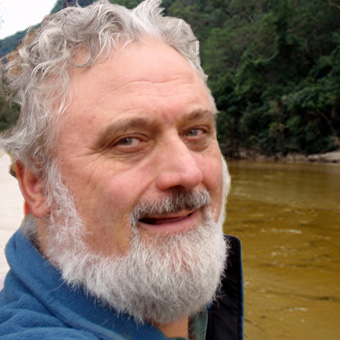
Dr. Haydn Washington
Haydn Washington is an adjunt lecturer at UNSW. He has a forty year history as an environmental scientist, writer and activist. He has a degree in ecology, a Masters of Science in eco-toxicology (heavy metal pollution), a Dip. Ed., and a Ph.D. ‘The Wilderness Knot’ in Social Ecology (2007). Haydn was worked in CSIRO, as Director of the Nature Conservation Council of NSW, as an environmental consultant, and as a Director of Sustainability in Local Government. He is the Co-Director of the NSW Chapter of the Center for the Advancement of a Steady State Economy. Haydn has written books on environmental issues, the most recent being ‘Demystifying Sustainability’ (2015) and as lead editor of ‘A Future Beyond Growth’ (2016). Haydn is also keenly interested in geodiversity, especially the pagoda rock formations of the western Blue Mountains.

Sheona White
Sheona is Director of the Penrith Regional Gallery, Home of the Lewers Bequest. She has overall responsibility for artistic programming strategy across the key areas of the Gallery in exhibitions, collection, public, education and community engagement.
White’s professional purpose is to explore and develop visual arts advocacy through community, education and public engagement and build an exchange of ideas in the arts. Her aim is to deliver meaningful programs and facilities drawn from needs analysis and sound curatorial rationale. Through her work on community contemporary art exhibitions, late night programming, festivals, concerts and cross generation visitation, White promotes public understanding and enjoyment of art grounded in research and committed to sustainability and inclusion.
White has developed and initiated key programs in many cultural institutions including the National Museum of Australia, the National Gallery of Australia, City of Sydney Libraries, the Art Gallery of NSW, the Museum of Contemporary Art and Wollongong City Gallery.
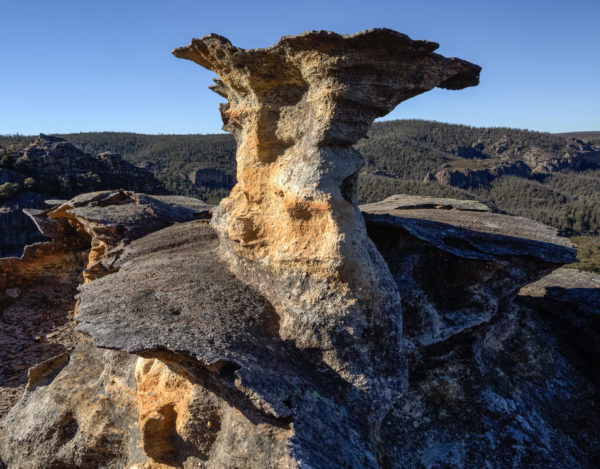
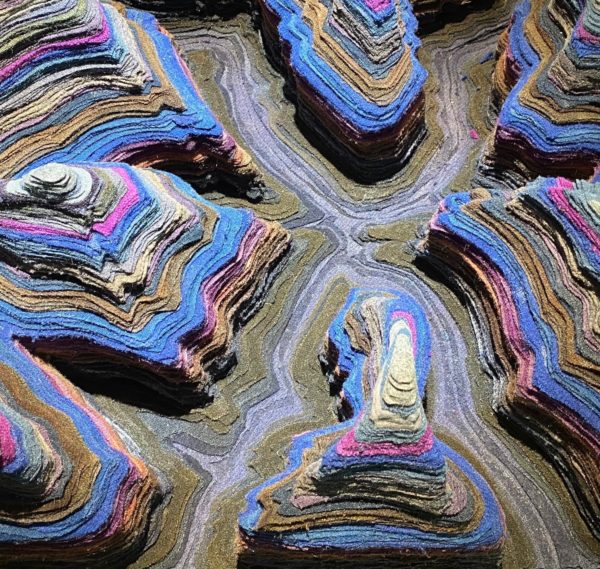
APRIL 29 to JUNE 20
ANNE GRAHAM – INSTALLATION
BOYD McMILLAN – ARTIST Ink/Watercolour, Acrylic
To be included in exhibition, a selection of Photographs focusing on iconic regional imagery.
A WORD FROM THE ARTIST – ANNE GRAHAM – In 2015 I completed a short residency at The Big C Gallery in Bilpin, NSW. Yuri and Rae Bolotin introduced me to the Gardens of Stone. The Aboriginal occupation of this place dates back at least 65,000 years. It is a special place that we must preserve, Activities such as off-road driving and mining can destroy this heritage. I want in this work to at least begin to draw attention to this magical place. I have used discarded woollen blankets, rubbish I suppose from our affluent society, to draw attention, as Charles Darwin said to: “Nature which is power incessantly ready for action and is immeasurably superior to man’s feeble efforts as the works of nature are to those of Art.”
SATURDAY MAY 1st – Opening Event – 3.30pm – FREE EVENT
To help us with catering to the EXHIBITION PAGODA OPENING EVENT please register your attendance below.
SATURDAY 8th May 11 am to 3 pm Destination Pagoda country information
SATURDAY 8th May 1 pm to 3 pm Dr. Megan Halcroft Studio Gallery. Native Bees and beneficial insects workshop
To help us with catering to the events please register your attendance below.
SATURDAY MAY 15th – Pagoda Journey Forum – All day event – $15
A premier Australian Heritage Festival Event at Lithgow. Professor Anne Graham’s installation, ‘Gardens of Stone’ will be showcased in the Gang Gang Gallery’s main gallery space, surrounded by an array of photographs of the birds of that country and watercolour works capturing some of its extraordinary landscapes.
A selection of special guest speakers.
A film portraying the beauty and potential of the proposal to create a State Conservation Zone in this area will also be showing continuously in the adjoining studio gallery. Viewing these works in the country of their inspiration, linked to the possibility of visiting that country whilst in the region, makes this an experience that will touch multiple senses.
SATURDAY 22nd May 11 am to 2 pm Destination Pagoda country information
SATURDAY 5th June 11am Yuri Bolotin. Experienced as a guide in the Destination Pagoda country Yuri will share some of his insights into this extraordinary country. Free event.
SATURDAY 12th June 11 am
Are We There Yet!
Michael Keats OAM A follow up to his 2017 talk exhorting Lithgow to embrace the tourism opportunity offered by the Destination Pagodas Country. Free event.
SEE LINKS BELOW FOR FULL PROGRAM DETAILS
IMPORTANT LINKS
How to get to places you can visit in the Pagoda Country
D E S T I N A T I O N P A G O D A
Lithgow has the potential to become NSW’s hottest new tourism destination. Surrounded by the unparalleled beauty of the unprotected Gardens of Stone, Lithgow has a fantastic opportunity to secure its future as an eco-tourism hotspot.
Destination Pagoda is a visitor management proposal for a 39,000-hectare Gardens of Stone State Conservation Area. The untapped value of Lithgow’s Gardens of Stone backyard lies in its diverse and unique scenery, as well as rare plant and animal life. These values can be protected and enjoyed by thousands of people through the addition of recreation facilities that will enable families to get close to nature while still enjoying the sights of the Lithgow region.
A new Gardens of Stone State Conservation Area with tourism development will be a win for the economy, community, and environment of Lithgow and New South Wales.
“The most beautiful place I have ever visited. An area of unique wilderness only 100km west of Sydney, Australia that is currently unprotected and vulnerable”
An emotional film by filmmaker Tim Harris
